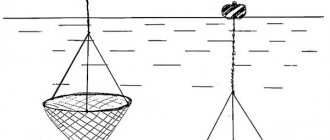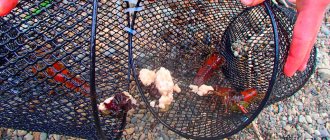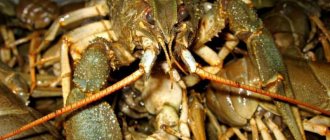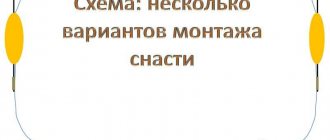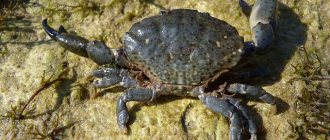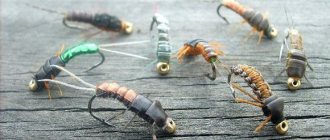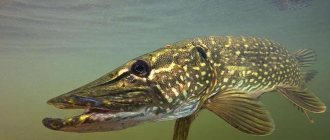- Prohibited fishing methods and gear on the territory of Mordovia
- Prohibited periods and places of extraction (catch) of aquatic biological resources
- Types of aquatic biological resources prohibited for extraction
- Minimum size of aquatic biological resources caught
- Daily fish catch rate in the Republic of Mordovia
In 2020-2021, the Federal Law on Recreational Fishing came into force, but its provisions also do not contain specific prohibitions and rules for fishing. This law contains general provisions regarding recreational fishing.
Specific fishing rules are approved for each fishing basin.
On the territory of Mordovia, the Fishing Rules for the Volga-Caspian fishery basin are in force, approved by Order of the Ministry of Agriculture of Russia dated November 18, 2014 N 453 (as amended in force in
2021
year). These rules apply throughout the republic. The administrative center is Saransk. Large cities and towns: Ruzaevka, Kovylkino, Komsomolsky, Zubova Polyana, Krasnoslobodsk, Chamzinka, Ardatov, Torbeevo, Romodanovo, Insar, Lyambir, Lukhovka, Yavas, Temnikov, Yalga, Bolshie Berezniki, Atyashevo, Yelniki, Staroe Shaigovo.
The Volga-Caspian fishery basin is divided into the Northern and Southern fishery areas, delimited by a conventional line running along the dam of the Volzhskaya Hydroelectric Power Station (the city of Volgograd).
The northern fishery region of the Volga-Caspian fishery basin includes the Volga River from the upper reaches to the dam of the Volzhskaya Hydroelectric Power Station (the city of Volgograd) with the basins of the rivers flowing into it, as well as all water bodies of fishery importance located in the territories of the Republics of Bashkortostan, the Republics of Mari El, Mordovia, Tatarstan, Udmurt Republic, Chuvash Republic - Chuvashia, Perm Territory, Belgorod, Bryansk, Vladimir, Volgograd (above the Volzhskaya Hydroelectric Power Station dam), Vologda (Rybinsk Reservoir and other water bodies of fishery importance in the Cherepovets region), Ivanovo, Kaluga, Kirov (beyond with the exception of water bodies of fishery importance in the Northern Dvina River basin), Kostroma, Kursk, Moscow, Nizhny Novgorod, Orenburg, Oryol, Penza, Ryazan, Samara, Saratov (with the exception of water bodies of fishery importance in the Don River basin), Smolensk, Tambov, Tver, Tula ( Oka River basin), Ulyanovsk, Yaroslavl regions and the city of Moscow.
Citizens have the right to carry out recreational and sport fishing in water bodies of public fishery importance freely and free of charge in accordance with the rules of fishing.
Forbidden tools and methods of fishing in the Republic of Mordovia
On the territory of Mordovia it is prohibited:
- a) application: networks of all types;
- traps of all types and designs (merezh, venter, versh, “muzzle”, “pins”), with the exception of crayfish traps;
- passive production (catch) tools (“zakidushki”, “postavushki”, “pokes” and others) on rivers that are habitats for salmon species of fish;
- firearms and pneumatic weapons, crossbows and bows;
- fishing rods (including bottom fishing rods) and spinning gear of all systems and types with a total number of hooks (single, double or triple) of more than 10 pieces per citizen;
- trawling and dredging mining (catch) gear;
- net straining and seizing fishing gear (catch) and devices (drags, seines, drags, bastings, lifts, circles, “TVs”, “screens”, “grabs”, “drills”, “shards”, “capes”, “kerchiefs” ", "sakov", "kotsov", "krylatok", "German", "vozmilok", "rezhakov", "okhan" and others), with the exception of lifts ("spiders") and scoops - no more than one piece per citizen , size (length, width, height) of no more than 100 cm, and mesh size (pitch) of no more than 10 mm (including those used with bait) for the production (catch) of live bait (bait), except for especially valuable and valuable species of fish;
- piercing fishing (fishing) tools (spears and others), with the exception of amateur and sport fishing carried out using special pistols and guns for underwater hunting;
- catfish;
- traps;
- hook fishing gear;
- by the method of purpleing, jamming, rutting (including with the help of rattling and bogging);
Important. In amateur and sport fishing, the use of nets for fishing (catching) from fishing line (monofilament) is prohibited.
During amateur and sport fishing, the installation (construction) of huts and other stationary structures on ice is prohibited, with the exception of portable windproof devices.
What time of day should you catch crayfish by hand?
The simplest and most primitive way is to catch crayfish with your hands. The best time for this is twilight. It is with the onset of night that they crawl closer to the shore.
When fishing, it is possible to take advantage of the desire of arthropods to get closer to the light. In some cases, they are able to crawl even onto land towards the light of a fire.
When hunting during the day, you should remember about the crayfish’s ability to move very quickly, pushing off the water surface with its tail, that is, it will move with its head backwards.
The technique for catching crayfish during the day using underwater fishing is simple:
- Buy a mask and fins.
- Take in more air.
- Dive.
- Explore the bottom.
- Locate potential prey.
- Grab it with your hand.
I would also like to highlight fishing in holes; this method is not as simple as it seems. Please pay attention to the following nuances:
- danger. The mink may not contain cancer, but, for example, a muskrat or a predatory fish. If you can’t see the protruding antennae, it’s better not to go there.
- suction effect. Since the walls of the hole gradually narrow, there is a chance that the hand will become trapped. It will not be possible to free yourself quickly enough, and there may not be enough air reserves.
The method of catching crayfish by touch is practiced in overgrown areas along the shore. This method does not require either a mask or fins; you need to move along the coastline in the vegetation, feeling for crayfish with your hands and feet.
If you decide to use this method of extraction, it is recommended to wear a protective suit or just old clothes to avoid an allergic reaction. Another advantage of a protective wetsuit is that it protects the body from hypothermia during diving.
To fish out crayfish from a greater depth than 1.5 meters, crayfish mites are used. They look like a long pole with an attachment in the form of pincers made of hollow wood or a net.
The most important thing in crayfish hunting is the wise use of natural resources. You should not organize fishing during the ban or in places not intended for this. Individuals smaller than 10 cm should also be released, then the baleen population will recover in time and the number will remain at the same level.
Cloudflare Ray ID: 63a7cbc05f0f7b6b • Your IP: 195.64.208.251 • Performance & security by Cloudflare
Cloudflare Ray ID: 63a7cbc058b416a1 • Your IP: 195.64.208.251 • Performance & security by Cloudflare
But in reservoirs with a muddy bottom, algae or in places with a hard sandy bottom, trying to catch crayfish is a waste of time.
Prohibited periods and places for fishing in the Republic of Mordovia
Forbidden places
The fishing rules on the territory of Mordovia establish the following areas (places) prohibited for the extraction (catch) of aquatic biological resources:
- Lake Svetloe (Temnikovsky district);
- the mouths of the Urkat and Moksha rivers - including the pre-mouth spaces, at a distance of less than 0.5 km in both directions and deep into the lake or bay;
- the place where the Sivin River flows into the Moksha River (Sivinskaya Yama), for 0.5 km downstream and 0.5 km upstream of the Moksha River (Krasnoslobodsky district);
- a section of the Moksha River for 300 m below and 500 m above the bridge (Krasnoslobodsky district);
- a section of the Moksha River near the village of Staroye Devichye from the bridge to the village of Kamenny Brod (Elnikovsky district);
- at the dam of the Turgenev reservoir, 500 m above the dam (Ardatovsky district);
- lake “Pleten Vilge” (oxbow lake of the Sura River) near the village of Mordovskoye Davydovo (Kochkurovsky district);
- at the dam of the Andreevskaya hydroelectric power station - below the dam for 1 km and above the dam for 200 m (Kovylkinsky district);
- at the dam on the Moksha River near the village of Rybkino - below the dam for 300 m and above the dam for 200 m (Kovylkinsky district).
Prohibited fishing periods
Fishing rules on the territory of the Republic of Mordovia prohibit the following fish:
- from April 15 to June 15 - with all fishing gear (except for one float or bottom fishing rod from the shore with a total number of hooks of no more than 2 pieces on fishing gear for one citizen outside spawning grounds).
How to catch crayfish using a crayfish trap?
Catching crayfish using a crayfish trap is one of the easiest, most inexpensive and convenient methods of crayfish. It does not require special concentration or special effort. In addition, crayfish traps are a completely legal way of catching crayfish and are not considered poaching.
You can do this in any way that is convenient for you: either with a pin or by tying it. A small weight is also attached to the middle of the shell to prevent it from floating.
A fishing line with a float is attached to the crayfish catcher. The length of the fishing line depends on the depth to which you lower the crayfish.
Usually, along the shore, the reservoir is overgrown with reeds, so it is better to place crayfish traps by sailing by boat from the shore to the place where the largest concentration of crayfish burrows is. You can also lower crayfish from steep cliffs by attaching a fishing line to a long fishing rod.
You need to check the crayfish traps depending on the type of gear you have. But you need to remember that checking too often can lead to the fact that you simply scare away all the crayfish.
- Install different tackle in each crayfish trap.
- Inspect each one after 10–15 minutes.
- Determine which has the largest number of crayfish.
- Continue using the bait that has had the most success.
Under good reservoir conditions, you can catch crayfish anywhere. Whether it's a stream, an oxbow lake or a lake, a favorable environment will have a positive effect on your catch. However, the largest concentration of crayfish is in rivers. At this point they usually dig a place for themselves to hide.
Where can you catch crayfish ? Their frequent clusters:
- Muddy bottom
- Sandy shore
- Rocky coast
- Shallow water
- Clean bottom
- Slopes
- driftwood
The process of gestation of eggs lasts much longer in crayfish than in any other fish. Thus, having laid eggs under her belly at the beginning of autumn, the crustacean carries it with her throughout the subsequent winter and spring, and only in late June and early July do young crustaceans emerge from these eggs.
Crayfish are no less desirable prey than fish. Crayfish are very tasty and, to be honest, many people prefer crayfish with beer. In addition, crayfish can be used as fishing bait. A large crayfish reaches 20 cm in length (not counting the length of the claws), and its weight can be up to 200 grams, but catching such crayfish is a huge success for a crayfish fisherman. Most often, crayfish 10–12 cm long are caught using crayfish traps.
Where to catch crayfish
The answer to the question of where to catch crayfish is simple - crayfish are found exclusively in clean water bodies. If the water in a reservoir is heavily polluted or not rich enough in oxygen, then catching crayfish in it is a futile exercise. Therefore, it is better to catch crayfish in rivers than in lakes, where the water stagnates faster.
What time do they catch crayfish?
When can you catch crayfish?
Prohibitions on catching crayfish in regions are established by the Fishing Rules for each fishing basin, so be sure to check when the ban is in effect in your region!
What bait to catch crayfish with
Opinions often differ on the best crayfish bait, so it's worth reading the tips and using them to your own discretion. Or maybe, by experimenting, you will discover your own unique bait for crayfish and you yourself will give recommendations on which bait is best for catching crayfish:
Tip 1. It is best to use fresh fish as bait for crayfish, not rotten fish, as many people believe. Experienced crayfish fishermen also add a little dill with the bait and, in a mesh bag, a piece of cake and a slice of rye bread, the crust of which has been rubbed with garlic.
Tip 2. Fish, meat, frogs or grasshoppers are also suitable as bait for crayfish. Moreover, the more spoiled and smelly the bait, the better, since crayfish feed on carrion. The smell that attracts crayfish will be stronger if the carcass is cut along the back to the vertebrae and the meat is turned outward.
How to catch crayfish by hand
How to unhook a crayfish:
- take some water into the bag and put the crayfish in it; when it feels the water with its tail, it will try to escape and remain in the bag.
- with your thumb and forefinger we press on the claw from the inside and back of the claw - the crayfish will weaken its grip, the main thing is not to overdo it with force, otherwise you will simply break the claw.
How to catch crayfish using a crayfish trap
Open type shells
It is better to catch crayfish using crayfish traps, also called crayfish or crayfish. These are very simple and cheap fishing gear; you can make a crayfish trap yourself. Shells have different designs and are made of mesh and wire or wood. The simplest of them is the crayfish-grip or crayfish-plate. It consists of a wire or wooden circle with a diameter of 50-70 cm, onto which a delta is stretched so that it sag in the middle.
If a crayfish trap is needed to catch crayfish at depth, then three or four ropes are tied to it, connected by a knot, from the latter there is a long rope for raising and lowering a projectile with a float at the end.
If the crayfish catcher is intended to catch crayfish in the coastal zone, it is better to use a different type of grip, in which the float is replaced by a pole. The latter is stuck into the ground. The bait is tied to a pole or directly to the bait, preferably in several places.
A similar device has a crayfish trap consisting of a wire circle with a cone-shaped bag, to the end of which a weight is usually attached. Often this crayfish trap is baited with earthworms, which are first strung on a wire and screwed to a circle. The crayfish trap is raised with a rope tied to a circle.
Catching crayfish with a crayfish trap is easy if you lift the crayfish trap with a quick and sharp movement. The best way to do this is from a boat. If you lift the crayfish trap slowly and carelessly, the crayfish have time to run away, especially from the grip. Checking should be done every 15-20 minutes.
Closed shells
The best results are obtained by catching crayfish with closed crayfish traps, also called nightlights or crayfish houses. These fishing gears are more complex than open-type crayfish traps. They can be folding. The advantage of catching crayfish with a closed-type crayfish trap is that they do not require frequent checking. Usually they are checked 2 - 3 times at night or before dawn.
Butchs or gobies are constructed according to the same type, which are double-necked traps of square or cylindrical shape (length up to 70 cm, diameter up to 20 cm), made of pine splinters, which are reinforced on 6 circles with wire or bast. Two necks with an inlet diameter of 5-7 cm are inserted at the ends, and a door is cut out on top. The latter is used to remove crayfish and place a stick in the form of a spacer into which the bait is clamped.
Collapsible vent. It is structured like a butch; consists of three wire circles (diameter 20-25 cm), on which the del is pulled, and two necks (length 25-30 cm, inlet - 5-7 cm), tied to each other with ropes. Two wire spacers, forked at the ends, rest against the outer circles and keep them taut. Along with this, crayfish traps with several necks (crests) are also used.
How to store caught crayfish
In the summer, caught crayfish should be placed in a venter-type cage with a narrow, tied hole and kept in running water while fishing. When catching crayfish at night, they can be placed in a basket and kept in the air.
If fishing is delayed, then we must not forget that crayfish quickly die in the sun, so they should be protected from direct sunlight.
In winter, crayfish must be kept in water all the time, as they quickly die in the cold. It is best to have a small lockable barrel on a skid for these purposes.
The best tools for catching crayfish are crayfish crayfish, which do not require continuous observation and allow you to catch crayfish together with fishing.
How to catch crayfish with a fishing rod
How to catch crayfish with a spear
How to catch crayfish with a shoe
If you really want to catch a crayfish, try catching crayfish with a shoe. Catching crayfish with a shoe is easy. To do this, shoes with bait lowered inside on a long rope are immersed in the bottom of the reservoir. Having climbed inside, the smell of the crayfish is lifted ashore.
Do-it-yourself clamshell
Catching crayfish is not a difficult task. It is enough to have a clamshell, which you can easily make with your own hands. The simplest and most common shell design is a ring of steel wire with a diameter of 40-50 cm covered with mesh. The disadvantage of such a crayfish trap is that it needs to be checked every 25-40 minutes since the crayfish, having eaten, can easily leave it.
The crayfish trap, the making of which is described below, can be left overnight, since 90% of the crayfish that are caught in this crayfish trap will have a hard time getting back out.
To make a shell with your own hands we will need:
- wire with a diameter of 4-6mm;
The process of making a shell with your own hands:
First of all, we make two metal rings. The lower ring has a diameter of 40-50 cm, and the upper ring has a diameter of 15-20 cm.
We attach the mesh to the ring with plastic clamps every 5-7 cm. Instead of plastic clamps, you can use nylon thread.
We make three spacers from wire of a smaller diameter; for these purposes I used electrodes d 3mm. The spacers must be made of equal length and in such a way that the ring of smaller diameter is in the center at a height of 12-18 cm.
So that the shell can be folded for ease of transportation, we make one of the three spacers removable. We fix the remaining two on rings.
After the spacers are installed, we tighten the sides of the shell. And secure it with clamps on the top ring.
We fasten the clamps on the upper ring in increments of 10-15 mm. Then we cut off the excess and the crayfish catcher is ready for use. Now you can safely catch crayfish with a crayfish trap all night long. Lastly, I would like to note that in order to catch crayfish with a crayfish trap, you must tie the bait.
How to cook crayfish
Preparing crayfish
Crayfish recipe
Useful information about crayfish
How do crayfish reproduce?
The process of gestation of eggs lasts much longer in crayfish than in any other fish. Thus, having laid eggs under her belly at the beginning of autumn, the crustacean carries it with her throughout the subsequent winter and spring, and only in late June and early July do young crustaceans emerge from these eggs.
What and how does cancer eat?
How does a cancer shed?
Did you like the article? Subscribe to the channel to stay up to date with the most interesting materials
If you do not want to waste your time just like that, then you should know when is the best time to do it. The most suitable night for this fishery is from 22:00 to 3:00. But this does not mean that sooner or later you will be left without a catch. In some reservoirs, crayfish decide to get out of their hiding places not at night, but early in the morning.
They prefer clean water. If you find a body of water in which they are present, then this place is quite environmentally friendly! It is quite a desirable prey, almost the same as fish. The taste is not questioned and therefore, some people prefer to snack on them when drinking beer. In addition, it itself often serves as bait, which can even be used to catch fish.
The length of a large individual, without claws, can reach as much as 20 centimeters, and the weight of an adult is often 150-200 grams. Catching just such a cancer is a great success! In most cases, fishermen are content with medium-sized prey, 10-12 centimeters in length. Let's discuss some features of production today, talk about choosing a territory, clarify the most suitable time for fishing and, of course, discuss in detail methods of production.
Habitats in rivers and lakes
Before answering the question of how to catch a lot, you need to decide in what place to do it. They are excellently caught in clean waters, so pay attention to the condition of the river, lake or pond before proceeding directly to the fishing process. Some crayfish fishermen note that the river is a little more suitable for this activity than stagnant lakes and ponds.
They can live at a variety of depths, ranging from 50 centimeters and reaching up to 3 meters . Remember that they choose a rocky bottom; it is not a problem to find a sufficient number of shelters there. You can come across them in reservoirs with a clay bottom, because it allows them to dig holes and hide there.
No need to search:
- In shallow water with a hard sandy bottom.
- On a muddy bottom, with dense thickets.
What time
Check the fishing dates according to your territorial location!
If you do not want to waste your time just like that, then you should know when is the best time to do it. The most suitable night for this fishery is from 22:00 to 3:00. But this does not mean that sooner or later you will be left without a catch. In some reservoirs, crayfish decide to get out of their hiding places not at night, but early in the morning.
Therefore, make sure in advance that fishing for these representatives is already permitted in your area. Among the majority there is an opinion that the most delicious specimens are caught in the fall, from late August to late October: fatty, rich, tasty meat.
Fish species prohibited from catching in the Republic of Mordovia
Species of fish prohibited from catching:
- lampreys, Russian sturgeon, sterlet, whitefish, podust, white-eye, carp, asp, chub, dace, bersh, crayfish.
Minimum size of fish caught in the Republic of Mordovia
When carrying out recreational fishing, the extraction (catch) of aquatic biological resources having a fresh length less than indicated in the table (commercial size) is prohibited:
Minimum size of fish allowed for catching
Name of aquatic biological resources
| Fishing size, cm | |
| Asp | 40 |
| Zander | 40 |
| Bream | 25 |
| Pike | 32 |
| Freshwater catfish | 90 |
| Carp | 40 |
The commercial size of aquatic biological resources is determined in fresh fish by measuring the length from the top of the snout (with the mouth closed) to the base of the middle rays of the caudal fin.
Important. Extracted (caught) aquatic biological resources having a length less than that indicated in the table above are subject to immediate release into the natural habitat with the least damage.
Daily fish catch rates in the Republic of Mordovia
The daily rate of production (catch) of aquatic biological resources (except for the case where such aquatic biological resources are subject to a permanent or temporary ban on production (catch) during recreational fishing) for each citizen when carrying out recreational fishing within the borders of the Republic of Mordovia is indicated in the table:
Daily catch rate
| Name of aquatic biological resources | Daily production (catch) rate |
| Bream | 5 kg |
| Zander | 5 kg |
| Pike | 5 kg |
| Freshwater catfish | 1 copy |
The total daily production (catch) rate for all types of aquatic biological resources (except for freshwater catfish), including those not listed in the table, is no more than 5 kg or one specimen if its weight exceeds 5 kg.
Important. If the total daily norm is exceeded, the extraction (catch) of aquatic biological resources is stopped.
In case of violation of the Fishing Rules in accordance with Part 2 of Art. 8. 37 of the Code of Administrative Offenses of the Russian Federation provides for administrative liability in the form of imposing an administrative fine on citizens in the amount of 2,000 to 5,000 rubles with or without confiscation of the vessel and other equipment for extracting (catching) aquatic biological resources. Responsibility for fish poaching is established by the Criminal Code of the Russian Federation (Article 256 of the Criminal Code of the Russian Federation).
Prepared by Personal Rights.ru
Additional information on the topic:
- General rules for fishing in Russia
- Federal Law on Recreational Fishing
- Fishing rules in the Astrakhan region
- Fishing rules in the Rostov region
About the ban on catching crayfish
Not all bodies of water allow crayfish fishing.
Therefore, when going fishing, you need to make sure that it is not prohibited in the chosen place. In addition, for each region there is a ban on mining at certain times of the year. This is established by the Fishing Rules for any agricultural reservoir. Fishing is generally prohibited in the autumn and winter months, in some regions until the summer. Also, the rules in some regions stipulate the minimum size of crayfish that is allowed to be caught.
Unspoken rules among fishermen prohibit catching female crayfish that have eggs. To avoid problems, you must take these rules into account and not break them.
No need to feed the fish anymore?! Now you just need to throw it into the water... For predators For white fish Read more...
Bait selection
To lure crayfish into a trap, you need to offer them good bait. The most popular and bringing a good catch are:
- bread with garlic;
- fresh fish;
- rotten meat;
- frogs.
Bread with garlic is a fairly simple and catchy bait option. The ideal option would be bread and garlic passed through a meat grinder, well mixed and formed into balls, which are recommended to be placed in small gauze bags. Dill is also added to the mixture if desired.
When choosing fresh fish for bait, you should pay attention to bream and roach. This type of fish is a delicious delicacy for arthropods
The fish should be cut and turned inside out so that the meat is on the outside. Very often, crayfish fishermen offer rotten meat to their prey. In the warm season, beef liver or chicken gizzard with a well-defined rancid aroma are perfect. A hungry arthropod will quickly approach a pronounced smell.
For non-squeamish crayfish fishermen, an effective frog bait is perfect. It's quite simple to do. The frog must be cut into 4 pieces, after removing the skin from it. Slices of dried frog are no less catchy.
